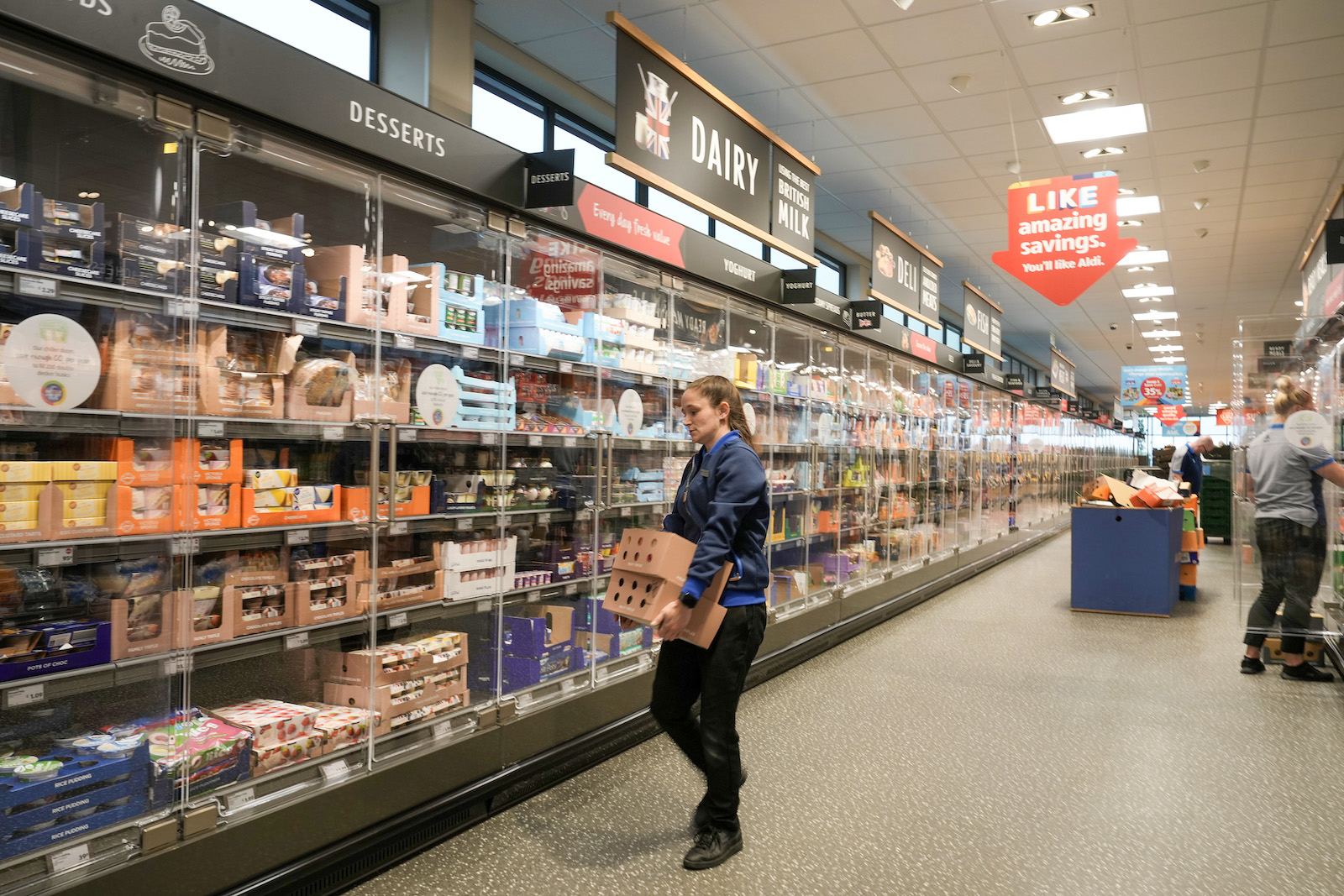Why Inflation Represents an Opportunity for Grocers

Colleagues at the new Tarleton Aldi store restock the shelves on July 22, 2022 in Tarleton, United Kingdom.
Photo by Christopher Furlong/Getty Images
During the recession in 2001 and the financial meltdown seven years later, the U.S. Department of Agriculture reported how “Food at Home” consumption grew at the expense of “Food Away from Home.” It’s logical: Stressful financial times make people shift from expensive restaurant dining toward more affordable at-home options.
We’re seeing a similar shift as the cost of living is being pushed up by global supply chain pressures, labor shortages, and climate-impacted food production. This new focus on spending follows two years of disruptions from the COVID-19 pandemic, which also forced people back to their own dining tables — this time for health and safety reasons.
All this eating at home, especially when coupled with how little time people have to prepare meals, provides grocers with substantial opportunities to expand and refine their efforts to provide fresh prepared foods and capitalize on new consumer priorities.
Market indicators are telling the same story today. According to recent numbers from data firm IRI, prepared deli foods are seeing double-digit growth again this year. We expect prepared foods and meal solutions for grocers to continue to represent a strong growth area. Those that invest heavily in them can be expected to see bottom-line benefit, with a broad halo effect anticipated for the rest of the store.
Fast and Healthy
The key to grocer success in prepared foods is to remember what’s important to consumers: Keep it healthy and easy. The Food Industry Association’s U.S. Grocery Shopper Trends 2022 report shows that three-quarters of consumers take less than an hour to prepare meals, and about half of the decisions about what to eat are based on wellness and finding calm.
How to provide a fresh convenience experience for customers that generates loyalty? Here are four key merchandising plays that make the most of grocers’ unique capabilities:
Step Up Sophistication
Cracking the shoppable “assembly” of the meal combines the simplicity of quick service restaurants with the abundance of grocery shopping — a killer combination. To do that, grocers have to get into the heads of shoppers, understanding price point priorities and tastes. By building a complete assortment in a layout that suggests different ways customers might assemble meals takes pressure off consumers with options to cook or heat and ways to embellish a menu to make it a little special. Ultimately, grocers suddenly become shortcut meal planners.
Even though grocers have a leg up on a lot of the competition, there are still some threats — especially from the meal delivery platforms that consumers relied on during the pandemic.
Innovate Like a Restaurant
We often turn to restaurants not only for convenience, but also for inspiration. We consume a variety of foods through the wide range of restaurants available to us, and the best restaurants keep us inspired by rotating and curating their menus to ensure we’re always delighted and interested. Today, most grocers change their offerings seasonally at best. Yet fresh convenience campaigns offer a natural venue to create an innovation pipeline through recipe variation and new sourcing.
Supercharge Omnichannel
Many retailers avoid making some of their prepared foods available online for fear of disappointing customers if they run out or because of the short shelf life of fresh foods. That means many are potentially ceding share. Instead, grocers need to invest in more visibility online, with leading retailers providing real-time transparency into what’s available in store. The most capable players take this a step further and allow customers to customize their orders as if they are at a restaurant.
Become a Destination
Many consumers don’t associate all grocery stores as places to go for high-quality prepared foods because of unappealing displays. To compete with restaurants you have to look more like them using the backdrop of bountiful produce, exposed kitchens, authentic rotisseries, and busy staffs to make offerings more compelling.
Changing Landscape
Even though grocers have a leg up on a lot of the competition, there are still some threats — especially from the meal delivery platforms that consumers relied on during the pandemic. They were the biggest winners, with U.S. sales of food and beverages from restaurants ordered via digital services increasing 187% between 2019 and 2021 and their prices gradually getting closer to grocery.
That said, inflation may be the platforms’ worst enemy. Shoppers already feeling pressure on their wallets may cut out takeout as a way of staying in budget.
Even so, the reliability of the “weekly shop” is increasingly under threat, which means grocers need ways to lure customers back. Fresh convenience and prepared foods seem to offer at least a partial answer.








